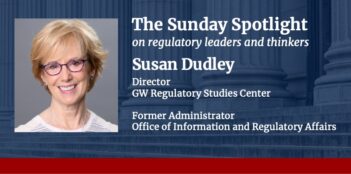
White House launches government website to enhance transparency.
Last week, the White House announced the online availability of extensive government datasets through Data.gov, an initiative that is part of the Obama Administration’s new Open Government Directive.
Data.gov is a website run by the Federal Chief Information Officers Council and its stated purpose is “to increase public access to high value, machine readable datasets generated by the Executive Branch of the Federal Government.”
The datasets on Data.gov come from many departments and agencies, with information ranging from how the federal government spends its money to how NASA maps the globe.
Of special interest to anyone interested in regulation is the OMB dataset on the White House’s review of economically significant rules from 1981 to the present.
One effect of the release of these datasets may be to create more public pressure on industry to address regulatory problems even without more regulation. Publication of datasets such as OSHA’s list of work-related injuries by establishment, or EPA’s dataset on locations of major polluting facilities, may serve to change behavior by revelation even without regulation – at least, if firms want to avoid being publicly known as having injuries or emitting pollution.
Data.gov also has a nifty webpage showing how many times each agency’s datasets have been downloaded. As of this writing, the Commerce Department leads the pack, with over 160,000 downloads – not surprisingly, this is because the Census Bureau is part of Commerce. Other popular datasets are maintained by NOAA and the EPA.
Users interested in these new datasets should be aware they come in all formats. Some are available as Excel files, some as text files, and some in other formats altogether. In some cases this is understandable. Files that overlay onto GoogleEarth, such as maps of land surface temperatures, are not in Excel format, for example.
In some circumstances, the accessibility of these data will still be challenging for ordinary citizens, even though they can be found on Data.gov. For example, EPA’s Toxcast data file includes technical information in what will likely be for many a hard-to-read text format. Depending on a researcher’s capabilities and needs, Data.gov’s varied formats may be either a small inconvenience or a larger barrier to the use of the data.
Still, Data.gov does provide a new source of data by and about the federal government. And the website is only expanding. The Obama Administration even welcomes your suggestions for what additional datasets to release.



